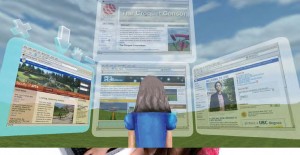A Core Driver of Globalisation
Switching from manual to CAE is not only about technology.. Switching from manual to CAE is not only about technology—it is also about content and effective instructional practices. The focus is on curriculum and learning, where the curriculum should be redesigned giving equal importance to use of the educational videos, lab sessions, projects, student driven activity such as power point presentations, and educational games….
Switching from manual to CAE is not only about technology—it is also about content and effective instructional practices. The focus is on curriculum and learning, where the curriculum should be redesigned giving equal importance to use of the educational videos, lab sessions, projects, student driven activity such as power point presentations, and educational games….
The education world has been
greatly infl uenced by rapid development in information and communication technology (ICT) and increasing availability of information. Schools and universities have advanced by leaps and bounds when it comes to incorporating technology into the learning environment. Government as well as private organisations like Intel, NIIT and Microsoft is taking enough initiatives to encourage the use of technology in the education system. Schools and universities are using educational tools like Moodle, iCore, Thinking Cap and Microsoft Silverlight which not only helps in delivering classes but also in automating the complete educational system.
As the access to information continues to grow exponentially, educational institutions cannot limit themselves to delivering a prescribed syllabus from teacher to student over a fi xed period of time. Even after sixty years of independence, India is home to 66% literates. Computer Aided Education (CAE) includes but is not limited to multimedia presentations, interactive digital books, video conferencing, educational games, whiteboard and Internet based learning. Individual instructors can use these tools during the knowledge delivery process. For a successful CAE, it is important to have an effective integration of the educational tools and the knowledge delivery process at each level, be it schools, colleges and universities etc along with the involvement of key stakeholders. This calls forth and proposes a “layered approach” to technology aided education system that primarily entails the correct fi t of technology in the teaching process and the initiatives taken by government and private organisations towards technology aided education system.
PRIMARY AND SECONDARY SCHOOL
The ‘ICT in Schools’ scheme, an Indian government initiative dates back to December 2004, which supports computer aided education process and enhances computer knowledge among the secondary school students. 2365 schools were sanctioned under outright purchase and 7200 schools on BOOT model. Andhra Pradesh was the fi rst state in India to offer ICT education to its entire 1.8 million school going children.
COLLEGES AND UNIVERSITIES
With an aim to impart technical education by using technology, the Ministry of Human Resource Development (MHRD), in 2003 had initiated– National Programme for Technology Enhanced Learning (NPTEL) that is a joint initiative by the seven Indian Institute of Technology (IIT) and Indian Institute of Science (IISC) Bangalore. The objective of NPTEL is to enhance the quality of engineering education in the country, along with the focus on developing curriculum based video courses, web based e-courses, digitally taped classroom lectures and additional study materials in every subject possible. Another scheme like e-shiksha initiated by Centre for Development of Advanced Computing (CDAC) is an e-learning portal that supports learning – anytime, anywhere with a multilingual subtitles thus supporting students of various demographics. Some of the other prominent initiatives undertaken by Shreemati Nathibai Damodar Thackersey Women’s University (SNDT) Pune, the Pay Phone Welfare Association (PPWA), and Indira Gandhi National Open University (IGNOU) have been remarkable and unique in imparting mobile education on music, dance, art and craft, nutrition, public health and AIDS awareness.
PRIVATE SECTOR INITIATIVES
Amongst the private sector initiatives, Intel India has been playing a pertinent role since past ten years with various central and state education bodies in offering programs in higher education, teacher training, informal education and science promotion. The Intel Learn Programme focuses on project based learning enabling the youth aged 8 to 18, to develop critical thinking, problem solving and collaborative learning attitude.
Microsoft is also actively involved in encouraging the use of technology use in learning and education through the “Partner in Learning (PIL)” which is a global initiative that aims to provide a better access to technologies, teacher’s training and use of an innovative method to impart knowledge. Further, Educomp smart class, mathguru, edulearn, iCoreTM (an educational software by iCore ), Thinking Cap, NIIT educational products are some of the key educational products that encourage the use of technology use in teaching in a single integrated solution to all school activities like interactive classroom for teachers, math lab and IT wizard for the students and quick school for the school management.
ROLE TRANSFORMATION
Unlike the traditional education system where an instructor delivered a lecture, technology aided education system has enabled the instructors to become more responsible in the knowledge delivery process and the participation of the students participate in the knowledge gaining process becomes two ways where they too are encouraged to contribute their view point on the topics. With the new defi ned role, the instructor becomes a part of the class and there is a dual sharing of knowledge by both instructor and the student. With the use of ICT, the students no more remain confi ned to the classroom teaching and prescribed books, but rather make an extensive use of the websites, magazine article and newspaper readings and real life examples
 LAYERED APPROACH
LAYERED APPROACH
For those who are currently operating on a manual basis but is now moving on to integrate ICT in educational organisation, the proposed architecture (refer to Figure1) outlines the layered approach. Switching from manual to CAE is not only about technology—it is also about content and effective instructional practices. The focus is on curriculum and learning, where the curriculum should be redesigned giving equal importance to use of the educational videos, lab sessions, projects, student driven activity such as Power point presentations, and educational games. Further continuous evaluation should be adapted rather than class tests and exams. Integrating technology in the education system needs planning, analysis (hardware, software, network and administrative support) and timely implementation. Technology integration can also lead to re-engineering of the education, administrative process. Training should be rendered to the instructors as well as the students on the usage of the tool. The success of CAE will depend on the acceptance of the tool by the instructor and the students. Challenges of ICT integration in education system: Absence of a top leadership, proper management and acceptance of the new work environment Improper investigation and monitoring Need of re-engineering before fi nal adoption
WAY AHEAD
Apart from imparting knowledge through Internet and integrating educational tools in the educational process, technology aided education also includes mLearning and Direct to Home (DTH) learning. (For example, Apple encourages mLearning through TuneU; Digital cable TV operators like Airtel, Tata Sky and Reliance) The system should be alert to the new developments happening in abroad and in India in telecommunication and educational domain. Organisations should adopt available technologies and facilities to develop new product from time to time.
CONCLUSION
IT has helped organisations to think beyond traditional learning method and redefi ne the concept of education. CAE helps students to focus more on knowledge rather than learning.Technology has no doubt opened the gateway to various educational resources but for teaching communities it is important to acknowledge that it is not the silver bullet that will solve all the academic problems, rather the instructors, students and the school management need to join hands to make the difference in the process and improve quality






















